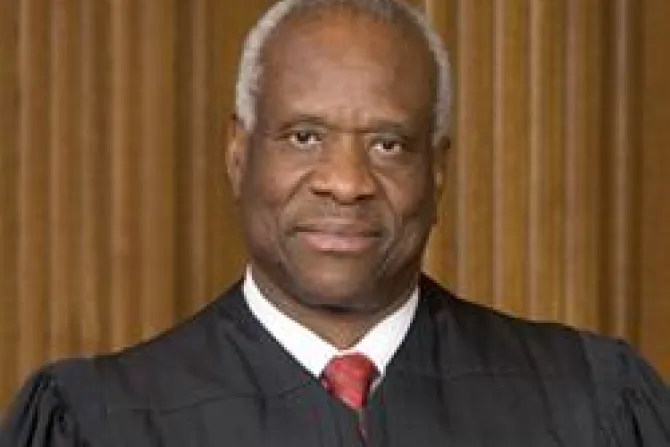Washington D.C., Nov 8, 2011 / 00:56 am
Supreme Court justice Clarence Thomas denounced his colleagues’ decision not to hear a case that would have allowed them to establish a clear standard for judging religious displays on government property.
“Today the Court rejects an opportunity to provide clarity to an Establishment Clause jurisprudence in shambles,” Thomas said in an Oct. 31 dissent.
He explained that the Supreme Court’s disjointed “jurisprudence has confounded the lower courts and rendered the constitutionality of displays of religious imagery on government property anyone’s guess.”
Thomas’ dissenting opinion responded to the court’s decision to reject consideration of a case involving 12-foot-high white crosses. The crosses were placed by the Utah Highway Patrol Association near areas where officers had been killed in the line of duty.
American Atheists, Inc. sued Utah officials, claiming that the 13 crosses violated the establishment clause because they bore the symbol of the Utah Highway Patrol and many of them were located on state property.
In August, a Tenth Circuit court ruled that the crosses were unconstitutional.
The Utah Highway Patrol Association appealed to the Supreme Court, but in an Oct. 31 decision, the court declined to hear the case.
In his dissent, Thomas criticized the Supreme Court’s failure to implement “a clear, workable standard” for establishment clause cases. He explained that the lack of a clear standard has resulted in arbitrary decisions and “wildly divergent outcomes.”
The Utah case, he added, was the latest in a long line of decisions regarding religious displays that have had varying results.
In April 2010, the Supreme Court ruled that a seven-foot cross erected by the Veterans of Foreign Wars would be allowed to remain on the property.
In Jan. 2011, a three-judge panel of the Ninth U.S. Circuit Court of Appeals ruled that the 29-foot Mount Soledad Memorial Cross in a San Diego public park violated the establishment clause. Supporters of the cross are appealing to the Supreme Court.
“Since the inception of the endorsement test, we have learned that a creche displayed on government property violates the Establishment Clause, except when it doesn't,” Thomas said.
“Likewise, a menorah displayed on government property violates the Establishment Clause, except when it doesn't.”
“A display of the Ten Commandments on government property also violates the Establishment Clause, except when it doesn't,” he added.
“Finally, a cross displayed on government property violates the Establishment Clause, as the Tenth Circuit held here, except when it doesn't.”
Thomas criticized the court for causing confusion by using different tests to evaluate cases rather than establishing a clear standard.
(Story continues below)
He said that because the Supreme Court’s precedents in establishment clause cases “remain impenetrable,” the rulings of lower courts also “remain incapable of coherent explanation.”
Thomas called on his fellow justices to clarify the confusion surrounding religious display cases in recent years.
“We should not now abdicate our responsibility to clean up our mess,” he said.



